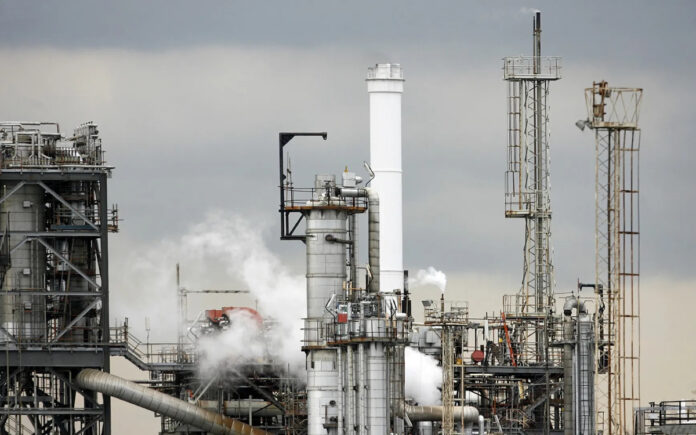London: In 2024, major European energy companies have significantly shifted their focus back to oil and gas, prioritizing near-term profits over climate commitments. This retreat from the clean energy transition is likely to continue into 2025, as governments around the world have slowed the implementation of clean energy policies and delayed climate targets, in part due to the energy crisis following Russia’s invasion of Ukraine in 2022.
European energy giants that had previously invested heavily in renewables now find themselves lagging behind U.S. rivals like Exxon and Chevron, which maintained a steady focus on oil and gas. Against this backdrop, companies such as BP and Shell have sharply reduced their plans for wind and solar power investments, shifting spending toward higher-margin oil and gas projects.
BP, which had set ambitious renewable energy targets, such as a 20-fold increase in renewable power capacity to 50 gigawatts by the end of the decade, announced in December that it would spin off most of its offshore wind projects into a joint venture with Japanese power generator JERA. Shell, which had once pledged to become the world’s largest electricity company, has largely halted new offshore wind projects, exited power markets in Europe and China, and weakened its carbon reduction targets. Similarly, Norway’s state-controlled Equinor has also slowed down its spending on renewable projects.
“Geopolitical disruptions, like the invasion of Ukraine, have weakened CEO incentives to prioritize the low-carbon transition amidst high oil prices and evolving investor expectations,” said Rohan Bowater, an analyst at Accela Research. According to Bowater, BP, Shell, and Equinor reduced their low-carbon spending by 8% in 2024.
Despite the slowdown, Shell has reiterated its commitment to becoming a net-zero emissions energy business by 2050 and continues to invest in the energy transition. Equinor, on the other hand, emphasized the challenges facing offshore wind, including inflation, cost increases, and supply chain bottlenecks, vowing to remain selective and disciplined in its approach to renewable energy.
Tougher Climate Outlook
The oil companies’ retreat from renewables spells bad news for global efforts to combat climate change. Global carbon emissions are forecast to rise to a new high in 2024, which is expected to be the warmest year on record. Furthermore, the energy sector is bracing for another turbulent year in 2025, with climate-skeptic Donald Trump potentially returning to the White House. China, the world’s largest crude oil importer, is also attempting to revive its struggling economy, which could boost oil demand.
Europe faces ongoing uncertainty due to the war in Ukraine and political turmoil in countries like Germany and France. These tensions were laid bare at the United Nations climate conference in Baku, Azerbaijan, in November, where host President Ilham Aliyev referred to oil and gas as “a gift from God.” The conference yielded a global climate finance deal but left climate advocates disappointed, as many had hoped for greater international cooperation in phasing out fossil fuels.
Also Read | Vietnam to Impose 97% Anti-Dumping Duty on Chinese Wind Towers
The energy companies are also watching closely to see if Trump follows through on promises to dismantle President Joe Biden’s green energy policies, which have sparked significant renewable investments in the U.S. Trump has vowed to withdraw the U.S. from global climate efforts and appointed oil executive Chris Wright, a climate skeptic, as his energy secretary.
Challenges Ahead for Oil Demand
The renewed focus on oil and gas by energy majors may face several obstacles. Demand growth in China, which has been a key driver of global oil prices for decades, is slowing, with signs that gasoline and diesel consumption may have plateaued. Additionally, OPEC and major oil-producing allies have repeatedly delayed plans to unwind supply cuts, while other countries, especially the U.S., have ramped up oil output.
Also Read | Syria’s New Authorities Launch Crackdown in Tartous Amid Rising Tensions
As a result, analysts expect oil companies to face tighter financial constraints in the coming years. Net debt for the top five Western oil giants is projected to rise to $148 billion in 2024, up from $92 billion in 2022, according to LSEG estimates.



